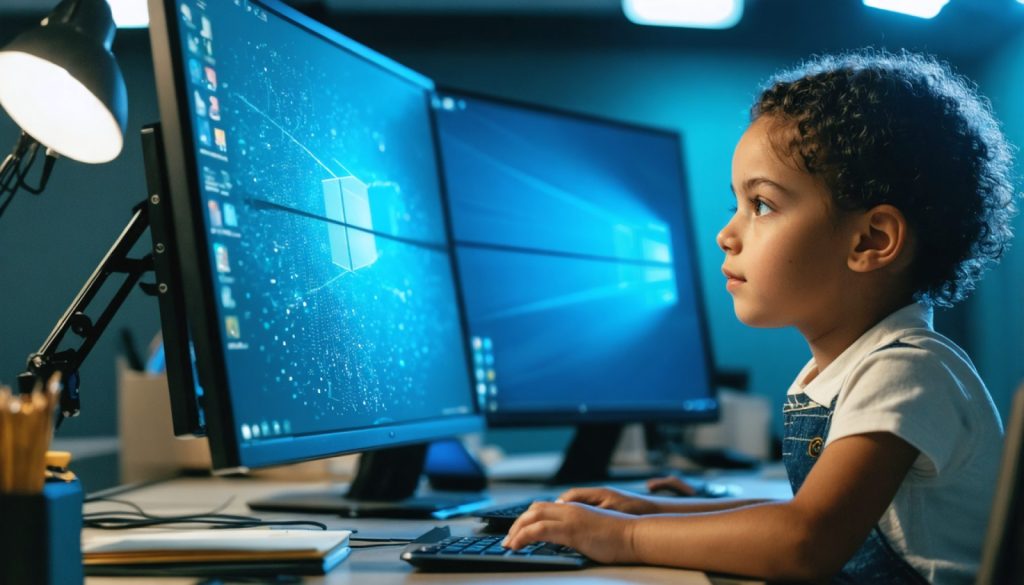
- Brazil’s education system is embracing digital filing to enhance efficiency and streamline administrative tasks.
- Digital tools allow teachers to access student records easily, personalizing instruction and reducing paperwork.
- Remote areas benefit from cloud technology, bridging educational gaps and promoting equity.
- The shift to digital filing supports environmental sustainability by significantly reducing paper use.
- Robust security measures protect sensitive student data during the transition to digital systems.
- This digital transformation signifies a strategic move towards a more connected and equitable educational future in Brazil.
Brazil’s vibrant education landscape is undergoing a technological metamorphosis, fueled by the country’s push towards digitalization. With sprawling educational networks serving millions of students across diverse regions, the nation is embracing digital filing systems to streamline administrative tasks, enhance learning experiences, and improve accessibility.
Picture a bustling classroom in Rio de Janeiro. Teachers equipped with tablets effortlessly access student records, assignments, and feedback with a few taps, eliminating the cumbersome stacks of paper that once cluttered their desks. This shift from paper to pixels not only declutters but also accelerates the educators’ ability to tailor instruction to individual needs.
Turbocharging Efficiency: Brazil’s education sector struggled with bureaucratic inefficiencies for years. Digital filing acts as a catalyst, propelling the system into a new era of efficiency. Schools now manage student enrollment, attendance records, and grades through integrated platforms, reducing the hours spent on administrative duties and allowing teachers to focus more on instruction and mentoring.
Bridging Gaps with Technology: The geographical vastness of Brazil presents significant challenges in educational equity. Remote areas, often deprived of resources, benefit significantly from digital filing systems. Through cloud technology, students in rural settings access the same resources and opportunities as those in urban centers, narrowing the educational divide.
Environmental Impact: The ripple effect of electronic filing extends into Brazil’s environmental efforts. By reducing paper consumption, the education system takes a step toward sustainability — an essential move for a country proud of its natural riches but concerned with deforestation and environmental degradation.
A Safer, More Secure System: Protecting student data becomes paramount as schools transition to digital filing, prompting rigorous security measures. Cutting-edge encryption technologies safeguard sensitive information, ensuring privacy and compliance with stringent data protection laws.
As vibrant sunsets signal the end of school days across Brazil, the digital data stored in secure clouds hums silently, continually shaping the future of education. This transformation exemplifies the nation’s commitment to harnessing technology to foster inclusive growth.
The shift to a digital filing system in Brazil is not just about modernization; it’s a strategic move toward a smarter, more equitable education system. By embracing technology and reducing reliance on paper, Brazil not only enhances the learning environment but also paves the way for a more sustainable and connected future.
Takeaway: Brazil’s adoption of digital filing systems in education is a testament to the power of technology in creating efficient, equitable, and environmentally-friendly solutions. With such innovations, the nation sets a precedent for others looking to transform their educational systems.
How Brazil’s Digital Transformation in Education is Setting New Standards
Deep Dive into Brazil’s Digital Education Revolution
Brazil is at the forefront of a digital revolution in education, utilizing technology to transform its sprawling system. This shift to digital filing systems fosters an environment of efficiency, accessibility, and sustainability. Let’s explore further facts and trends shaping this transition.
How-To Steps & Life Hacks for Implementing Digital Filing Systems
1. Assessment of Current Infrastructure: Evaluate the existing technological resources and identify needs for hardware and software upgrades.
2. Selecting the Right Platform: Choose cloud-based solutions that offer scalability, robust security features, and user-friendly interfaces.
3. Staff Training: Organize comprehensive training sessions for educators and administrative staff to ensure effective use of new technologies.
4. Phased Implementation: Roll out the system gradually, focusing on one region or district to manage unforeseen hurdles.
5. Feedback Mechanism: Develop channels for educators and students to provide feedback, leading to iterative improvements.
Market Forecasts & Industry Trends
The global e-learning market is anticipated to reach USD 375 billion by 2026. Brazil is a significant player in this market due to its extensive educational reform and investment in digital platforms (Research and Markets, 2023). This transformation is expected to continue accelerating, driven by technological advancements and governmental support.
Security & Sustainability Insights
Transitioning to digital systems requires stringent security measures. Brazil has implemented advanced encryption and follows compliance regulations like the LGPD (Lei Geral de Proteção de Dados). By minimizing paper usage, the education system supports Brazil’s eco-friendly initiatives, reducing deforestation risks.
Compatibility and Integration
Brazil’s digital platforms are designed to integrate seamlessly with existing educational tools, ensuring educators can transition smoothly without disrupting current workflows. Compatibility across devices ensures students and teachers have consistent access, regardless of location.
Controversies & Limitations
Critics point out potential challenges, such as the digital divide where internet access remains limited in certain rural areas. However, the government’s investment in expanding network coverage is beginning to mitigate these issues.
Pros & Cons Overview
Pros:
– Enhanced administrative efficiency
– Improved student-teacher engagement
– Reduced environmental impact
Cons:
– Initial implementation costs
– Requires consistent training and updates
– Relies on stable internet access
Real-World Use Cases
1. Rio de Janeiro: An urban center using tablets for real-time student feedback.
2. Amazonas Region: Remote schools access the same resources as urban schools, thanks to cloud technology.
Conclusion & Quick Tips
Brazil’s embrace of digital filing in education sets a global benchmark for efficiency, equity, and sustainability. For immediate action:
– Start by evaluating your institution’s current use of technology.
– Invest in training for seamless integration.
– Consider environmental impacts to align with sustainability goals.
For further insights and updates on digital transformation in education, visit Brazil’s Ministry of Education.
By understanding these elements, educational institutions worldwide can adopt similar systems, paving the way for a digital future.



